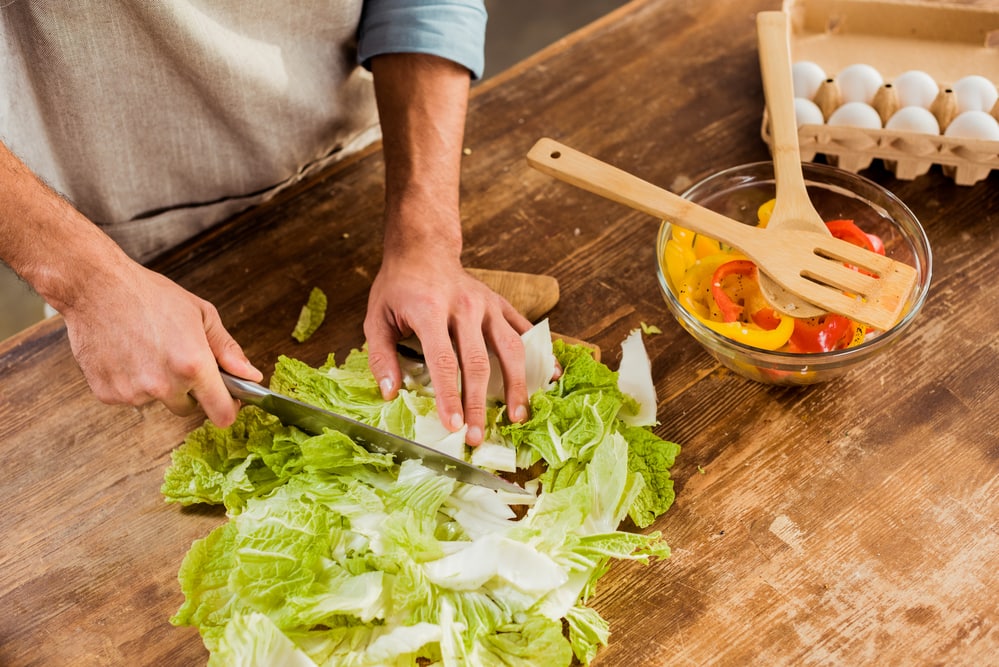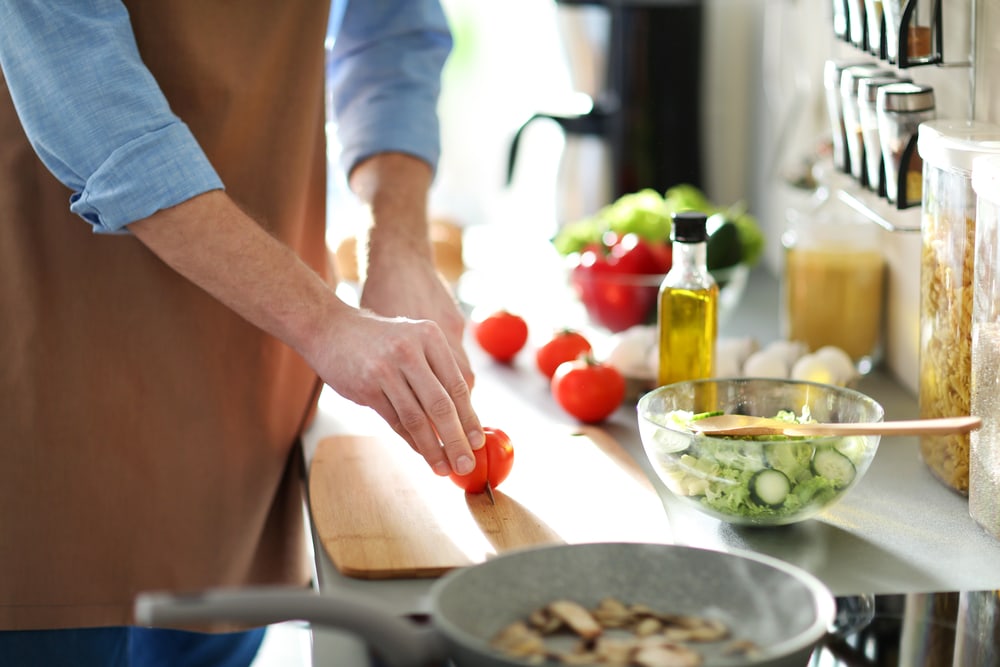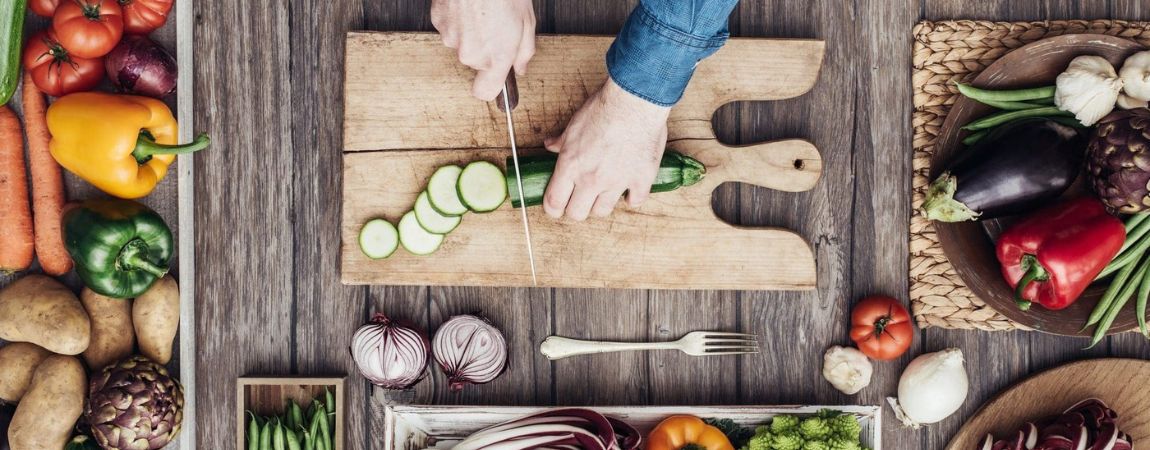It can be easy for our vision to become clouded by western-centrism. The rich culinary traditions of nations like Japan have produced some of the best kitchen tools available in 2022. This leads us to the following question: kiritsuke VS gyuto knives – which one is best?
While both options can work exceptionally well in the right contexts, it’s important to understand the difference between the two before making a decision. On this page, we’ll compare both kiritsuke to gyuto and help you find a knife that’s perfect for you.

Kiritsuke Overview
Kiritsuke knives are definitely less popular than gyuto in general. This is thanks in large part to their more specialist purpose. Gyuto knives are designed as versatile workhorses that can speed through a broad variety of kitchen tasks.
While kiritsuke knives can also be fairly versatile, their length and shape can be unwieldy to less experienced chefs. You’d be forgiven for thinking you were looking at a small sword at first! The flat, long blade of the kiritsuke makes it excellent for preparing vegetables and achieving long, uniform cuts of raw fish.
Shape
One thing to keep in mind with this kind of knife is that they’re best used with an up-and-down motion when chopping. The flat shape and atypical weight distribution may present a learning curve if you’ve only ever used a western chef’s knife before.
Once you’ve gained some experience, though, you should come to love the performance a kiritsuke can offer.
Ease of Use
Kiritsuke aren’t really designed for beginners. In fact, they used to be used exclusively by Japan’s most esteemed chefs. These days, culinary attitudes are far more relaxed. Be ready for a bit of fumbling at first, though!
Single-Bevel Sharpness
A traditional true kiritsuke knife uses a single-bevel blade. This allows for superior levels of sharpness and can help you achieve more uniform, precise cuts with a bit of practice; the food you’re cutting will always be “pushed” in the same direction – away from you.
It’s worth mentioning that these days, double-beveled variations of kiritsuke are also available that may be easier to handle for western cooks.
Uses for Kiritsuke Knives:
- Excellent for preparing vegetables
- Getting thin, long cuts of fish
- Cuts into softer meats
- Basic kitchen prep
Kiritsuke Basic Stats:
- Blades between 9.5 and 13 inches
- 1 – 2 mm blade thickness
- 59 – 63 HRC
Gyuto Chef’s Knife Overview
If a kiritsuke conjures images of a small sword, the gyuto brings something a little simpler to mind. Many people describe gyuto knives as a Japanese alternative to a western chef’s knife. While they exist as a distinct category in their own right, this description isn’t inaccurate.
Gyuto can be used for a huge range of kitchen tasks and can feel very familiar in the hand very quickly. The word “gyuto” means “beef knife/sword” in Japanese. This alludes to this knife’s original purpose – preparing various meats for traditional Japanese dishes.

Gyuto Chef’s Knife Shape
The sharp tip and flat edge of a gyuto knife makes it the perfect companion for all your slicing, dicing, and mincing tasks. Just like the kiritsuke knives described above, you’ll be using an an-and-down chopping motion when working.
If you prefer the more western approach of rocking the blade back and forth, look for a gyuto knife that uses a French profile (sabatier).
Weight
One thing gyuto knives are known for is their weight, or lack thereof. This makes them a super fast kitchen tool in the right pair of hands. Just keep in mind that you might need something a bit heavier when tackling bones or denser meats.
Gyuto Knife Length
When compared to kiritsuke knives, gyuto knives can seem significantly shorter. This allows them to move far more fluidly between a variety of kitchen jobs.
Gyuto Knife Uses:
- Essentially all standard kitchen tasks
- Faster cutting
- Dicing, slicing, mincing
- Preparing vegetables
Gyuto Knife Basic Stats:
- 7 – 12 inches in the blade
- Blades 1.5 to 5 mm thick
- HRC of 60 – 63
Kiritsuke VS Gyuto – What’s the Difference?
There are a few key differences to keep in mind when it comes to kiritsuke VS gyuto knives.
| Knife | Kiritsuke | Gyuto |
| Blade Length | 9.5 – 13 inches | 7 – 12 inches |
| Blade Thickness | 1 – 2 mm | 1.5 – 5 mm thick |
| Flexibility | Low | Low |
| HRC | 59 – 63 | 60 – 63 |
| Main Purpose | Long, thin cuts. Fish, vegetables. | A huge variety of kitchen tasks – bonus for speed |
Single VS Double-Bevel
Kiritsuke knives usually use single-bevel blades. Gyuto knives usually use double-bevel blades. This means that kiritsuke is great for precise, thin, razor-sharp cuts while gyuto knives are better for more predictable, versatile cutting work.
Length
If you know you need a longer knife for big cuts of vegetables or fish, opt for a kiritsuke knife. If you need a length that allows for more versatility, a gyuto knife is the way to go.
Choosing Your Knife
If you want something that’s undeniably versatile, we recommend picking up a gyuto knife. If you’ve got a bit more skill and will be working with lots of long cuts of fish and vegetables, a kiritsuke might be worth considering.
Gyuto Recommendation
For our money, this is 2022’s best kiritsuke knife:
– Mitsumoto Sakari 8-Inch Japanese Kiritsuke Chef Knife
The lifetime warranty is a nice added bonus!
– Find the best kiritsuke knife.
Kiritsuke Recommendation
This chef’s knife is truly excellent:
– Victorinox Fibrox Pro, 8 Inch Chef’s Knife
We love the way it feels in the hand!
Check out our guide to the best chef’s knives.

Final Thoughts
If you’re a beginner or more casual home cook, a kiritsuke will probably feel a bit unwieldy for you. A gyuto knife offers a fantastic level of versatility. Those who prep a tonne of veg and long fish will absolutely love a kiritsuke knife.
Whichever knife you choose, we hope it serves you well for many years to come!




Post Your Thoughts